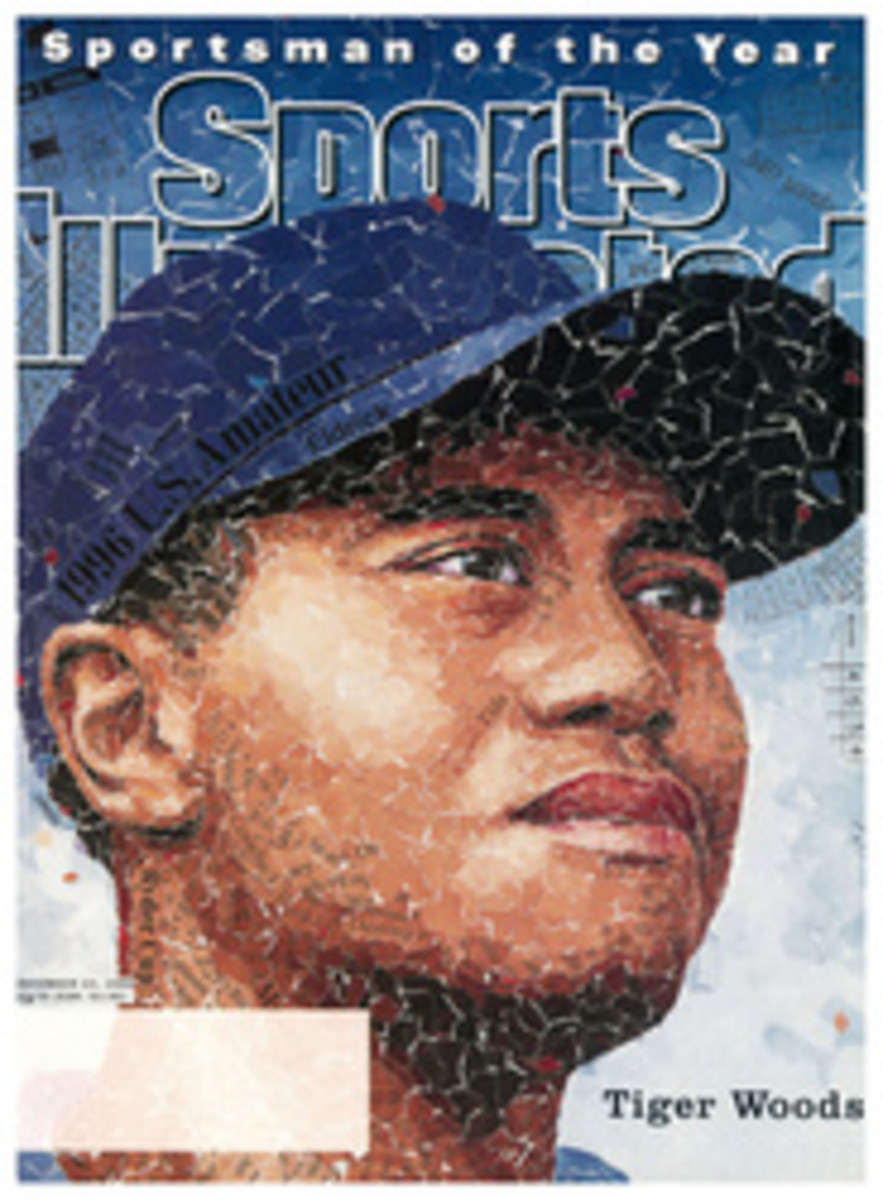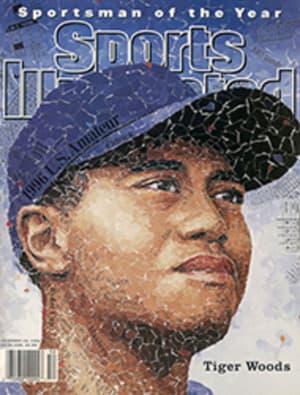
STRANGER IN A STRANGE LAND OR HOW ONE WOMAN FELT JOINING A TEAM AT THE MACHO NEW YORK ATHLETIC CLUB
Recently a close friend of mine mentioned that the New York
Athletic Club (NYAC) was putting together a women's swim team
and suggested that I try out. Recalling the club's vicious court
battles in the late 1980s over admitting females, I was
hesitant. However, in desperate need of an activity more
stimulating than climbing the StairMaster, I finally dived at
the opportunity. I had spent 16 years of my life, from second
grade throughout college, immersed in pool water, swimming
freestyle and butterfly sprints. But none of that had prepared
me for the demands of the NYAC's team selection process.
On the telephone, club member and vice chairman of the swimming
program Richard Ellis, an accomplished masters swimmer and
handball player, introduced himself politely, gave me a brief
rundown on the team and then began to grill me. In addition to
my best times he demanded a laundry list of information that
included my age (24), my current state of fitness, my college
and high school swimming records, my past world and national
rankings, recent meet results and personal references. He is
also the head coach for the team, and he informed me that the
club prides itself on its annual performance at the Metropolitan
Championships, which are held in late February. "We have won the
meet for a few years running, you know," he said. He explained
that the club funds its athletes' meet entry fees, association
membership fees and meet-related travel expenses. Then he
insisted that I commit immediately to participating in the Met
championship meet, which was still six months away, or forsake
the chance to try out for the team. I had no choice but to agree.
As Ellis was catching his breath, I asked him about the other
women on the team. "Oh, there's only one female on the squad
right now," he replied. "She swims occasionally. We've been
trying to get a relay together for a few years now. With you on
the team, we might have half of one." I imagined burly men
disguised in women's swimsuits to complete the relay. Before
hanging up, Ellis asked me to submit a swimming resume and a
letter formally expressing my interest in the NYAC program.
Applying to college had been easier.
When I was growing up, I knew the NYAC not as the birthplace of
amateur athletics in the U.S. but as a social club at which
middle-aged men swam naked in the pool, ate sumptuous meals and
then withdrew to steam rooms to combat caloric excess. In fact,
since its founding in 1868, the NYAC has played a significant
role in organized U.S. amateur sports. In addition to sponsoring
hundreds of talented athletes over the years, the 8,200-member
club has contributed money and manpower to the growth of amateur
track and field, swimming, boxing, wrestling, fencing and water
polo, as well as to the development of the international Olympic
movement. At the 1904 Games in St. Louis, NYAC members won 29
gold medals. Since the first modern Olympics in 1896,
club-sponsored athletes have won 117 golds, more than Australia,
Canada, Japan and many other nations.
Since 1956, however, the club has not won a gold medal in any
Olympic running event, and its most recent track and field
stars--discus thrower Al Oerter, miler Eamonn Coghlan and long
jumper Joe Greene--have either retired from competition or
relinquished club sponsorship in favor of shoe-company
contracts. As club athletic director Ray Lumpp laments, "We just
don't have the finances to back the Carl Lewises." So, the NYAC
pours its more modest resources into fencing, judo and rowing
development programs. In Atlanta it was not highly touted
runners who won medals for display at the club but Bruce
Baumgartner, a heavyweight wrestler who won a bronze; Lance
Deal, who won silver in the hammer throw; and James Pedro, who
took a bronze in lightweight judo.
The club has also been forced to become more inclusive in its
membership policies. In 1988 a Supreme Court decision required
the NYAC and other historically fraternal organizations in the
New York metropolitan area to accept women as members. Since
then the club has opened its gymnasium to females, and it is
trying to establish women's teams in rowing and fencing as well
as swimming. "We understand that times have changed and that we
must evolve as a result," says Lumpp, a member of the
gold-medal-winning 1948 U.S. Olympic basketball team who also
played for the New York Knicks from 1949 to '52.
When women were granted access to the club's facilities,
including the pool, the NYAC faced a dilemma. Traditionally
members had swum nude in the club pool. Even the water polo team
had trained without bathing suits. Insert a woman into the
water, and the boys could not be boys. As Fred Jarvis, the club
historian and archivist, wrote in the NYAC annals, "A certain
carefree, chlorinated joy would be gone forever, replaced by
Speedos and circumspection." The so-called "to suit or not to
suit" dispute raged for months. Not until September 1991 did
members grudgingly agree to abandon the Greek ideal and slip
into the bathing suits supplied in a pool bin. But even today, I
bet, purists engage in daring dips when women are nowhere in
sight.
Upon receiving my letter and resume, Ellis called me to schedule
a tryout in the club pool. Before hanging up, he gruffly
instructed me to wear a blazer and a skirt--the club has a dress
code--but said nothing about bringing a swimsuit.
My guide for the tryout, Lara Korhammer, the lone NYAC female
swimming team member, led me to the women's locker room, oddly
juxtaposed with the club's boxing room. I asked Korhammer, a
former Australian Olympic swimmer, how she felt about being the
only woman on the team. "It doesn't bother me," she said. "I
grew up with three brothers. Frankly, the guys make the training
more fun, particularly when you beat them." Plus, she thought
training with men helped her when it came to swimming her races
against women. As we changed, I admired the spotless floors and
the lack of mildew in the two-year-old locker room. Since every
locker is now reserved by female members, I expect the
cleanliness to be short-lived. Wearing our own racing suits and
club-issue seersucker robes, Lara and I made our way to the
third-floor pool, affectionately (and appropriately, as I was to
discover) referred to as the Turkish Baths.
Nothing in my swimming experience, which includes two Olympic
trials, had prepared me for the vaulted, modern-day Roman
retreat. The deep, tiled pool emerged through clouds of
chlorine-tinged steam. Along its perimeter were lounge chairs
supporting immobile bodies covered in white bath sheets. Here
and there a face appeared, eyes shut, mouth pursed in the final
stage of a snore. I perched myself at the end of one of the
chairs; its snoozing occupant did not budge. In the ancient
five-lane pool, men were swimming back and forth with slow,
confident strokes. Now and then figures appeared mysteriously
from the mist escaping the steam rooms at the far end of the
pool. Their faces were flushed and sweaty, and several sported
blotches of shaving cream from an afternoon grooming. Attendants
scurried about, bringing cold water and beers to the dehydrating
members.
One portly member glared at me suspiciously from the pool
starting block. "You trying out, miss?" he inquired. "Watch out
for those men in there. They might just beatcha." Though faint
from the heat, I pulled my robe around me more tightly and
waited for the coach to arrive.
Twenty minutes later, after a hearty handshake from the
64-year-old Ellis, I prepared for my swim. A few other team
prospects, all male, loosened their limbs beside me. I was
relieved to see some budding beer guts to complement my
thickening thighs. It had been a while since I had competed.
While Ellis fiddled with his stopwatch, I desperately tried to
recall race strategies, breathing patterns and stroke
techniques. As I mounted the slippery starting block, my
immediate concern was whether I would remember how to dive. But
with the "Go!" from Ellis, I plunged into the pool.
I plowed through 100 yards of freestyle, too fired up to worry
about how out of shape I was. Upon finishing, I glanced at my
watch to determine the damage. Though slow (about five seconds
off my personal best of 49.67), my time was not too
embarrassing. I peered over the high wall at Ellis and tried to
gauge his reaction. "Well," he said, "you're going to have to
lower that time a bit, but warm down and we'll talk about the
upcoming meets."
Was that a yes? I wondered as I floated through a few more laps
to get my heart rate back to normal. Later, as I was toweling
myself dry, my portly needler approached with an invitation to
swim in his lane. I politely declined.
After exchanging my bathing suit for a business suit, I toured
the club's Hall of Fame, on the second floor, with Ellis and the
other swimmers and saw all the awards bestowed upon club
athletes over the years, including a number of Olympic medals. I
marveled at vintage photos of track stars, wrestlers and
fencers. At the far end of the hall was a display featuring the
club's 1996 Olympians. I wondered how long it would take before
female athletes' names were included among the distinguished.
After assuring the coach that I would commence training
immediately, I sneaked a look at the recently renovated gym on
the sixth floor of the club. I was startled by the youth of the
men weaving across the basketball court, dribbling and shooting.
This was the next generation, the young Turks who would replace
the older ones downstairs at the pool. Among the men was a lone
woman who took a shot that arced gracefully through the net. One
of the men patted her on the shoulder, and she smiled.
With this vision in my head and with my new NYAC team privilege
card in hand, I walked out the club doors, into the New York
City night. As I strode over the club emblem, the regal winged
foot planted in stone, I recalled the NYAC motto: To promote
manly sports, exercises and amateur athletics of every kind....
Well, some traditions are meant to be changed.
TWO COLOR ILLUSTRATIONS: ILLUSTRATIONS BY KYRSTEN BROOKER [Drawing of woman holding references to join the New York Athletic Club; men observing woman in swimming pool]

